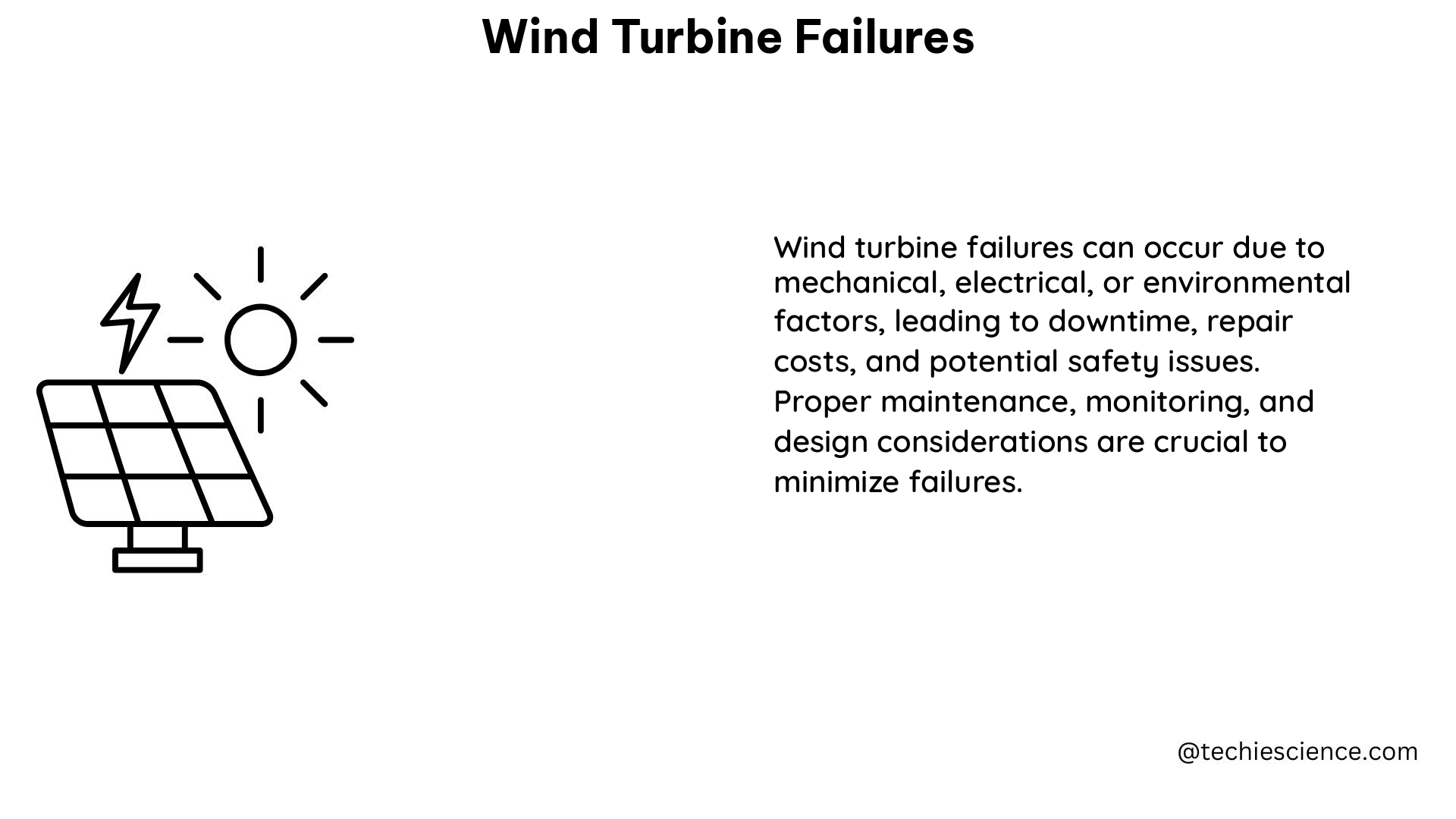Wind turbine failures are a critical concern in the renewable energy industry, as they can significantly impact the overall performance, reliability, and cost-effectiveness of wind power systems. Understanding the root causes, failure modes, and mitigation strategies for wind turbine failures is essential for optimizing the operation and maintenance of these crucial assets.
Quantifying Wind Turbine Failures through Reliability Data
Reliability data is the cornerstone for quantifying wind turbine failures. This data includes historical records of failures, repairs, and downtimes for individual turbines and their subassemblies. A comprehensive review of publicly available reliability data for both onshore and offshore wind turbines has revealed several key insights:
-
Failure Rates and Downtimes Vary Significantly: The study collated data from over 18,000 wind turbines, corresponding to over 90,000 turbine-years of operational data. The analysis found that failure rates and downtimes differed significantly based on the type of subassembly and the location (onshore vs. offshore) of the turbines.
-
Factors Influencing Failure Rates: Wind turbine failure rates and downtimes are influenced by a variety of factors, including the turbine type, location, and operational conditions. For example, offshore wind turbines tend to experience higher failure rates and longer downtimes compared to their onshore counterparts, due to the harsher environmental conditions and logistical challenges associated with offshore maintenance.
-
Skewed Failure Rate Distribution: The study found that the distribution of failure rates is skewed, with a small number of turbines experiencing a disproportionately high number of failures. This implies that large databases with low failure rates, despite their diverse populations, are less uncertain than more targeted surveys, which can be easily skewed by the failure patterns of specific turbine types.
Analyzing Wind Turbine Failures through Technical Specifications

In addition to reliability data, wind turbine failures can be analyzed through the lens of technical specifications, particularly in terms of reliability, availability, and maintainability (RAM) data. A systematic review of RAM data for offshore and onshore wind turbines has identified several key trends and challenges:
-
Failure Rates and Repair Times: Failure rates and repair times are significant factors influencing the overall reliability of wind turbines, especially in offshore applications. Offshore wind turbines tend to experience higher failure rates and longer repair times due to the logistical challenges and harsh environmental conditions.
-
Unscheduled O&M Costs: Unscheduled operation and maintenance (O&M) costs are a major contributor to the overall cost of wind energy, particularly for offshore wind farms. Reducing unscheduled O&M costs through improved reliability and maintainability is a critical priority for the industry.
-
Data Quality and Standardization: The study highlighted the importance of data quality for wind turbine condition monitoring and reliability analyses. Standardized data collection and processing methods are essential for ensuring the accuracy and comparability of RAM data across different wind farms and turbine models.
Addressing Wind Turbine Failures through DIY Approaches
To address the challenges posed by wind turbine failures, various studies have proposed do-it-yourself (DIY) approaches for condition monitoring and fault detection. These innovative solutions leverage existing data and technologies to enhance the reliability and performance of wind turbines:
-
SCADA Alarms Processing: SCADA (Supervisory Control and Data Acquisition) systems are ubiquitous in wind turbine operations, generating a wealth of data that can be leveraged for failure detection. Researchers have proposed algorithms for processing SCADA alarms to identify abnormal patterns and predict potential component failures.
-
Reliability Comparison of Drive Trains: The reliability of wind turbines can be influenced by the choice of drive train technology, such as doubly fed induction generator (DFIG) or permanent magnet generator (PMG) configurations. Comparative studies have been conducted to identify the most reliable drive train configuration for different operating conditions.
-
Condition Monitoring and Fault Diagnosis: DIY approaches for condition monitoring and fault diagnosis, such as vibration analysis, oil analysis, and thermal imaging, can provide valuable insights into the health and performance of wind turbine components. These techniques can help detect and mitigate failures before they escalate into more significant problems.
By leveraging reliability data, technical specifications, and DIY solutions, wind energy professionals can gain a comprehensive understanding of wind turbine failures and implement targeted strategies to improve the overall reliability and performance of these critical assets.
References
- Error Analysis in Wind Turbine Field Testing – NREL
- Wind turbine reliability data review and impacts on levelised cost of energy
- Reliability, availability, maintainability data review for the identification of trends in offshore wind energy applications
- Analysis of Wind Turbine Equipment Failure and Intelligent Diagnosis Method

The lambdageeks.com Core SME Team is a group of experienced subject matter experts from diverse scientific and technical fields including Physics, Chemistry, Technology,Electronics & Electrical Engineering, Automotive, Mechanical Engineering. Our team collaborates to create high-quality, well-researched articles on a wide range of science and technology topics for the lambdageeks.com website.
All Our Senior SME are having more than 7 Years of experience in the respective fields . They are either Working Industry Professionals or assocaited With different Universities. Refer Our Authors Page to get to know About our Core SMEs.